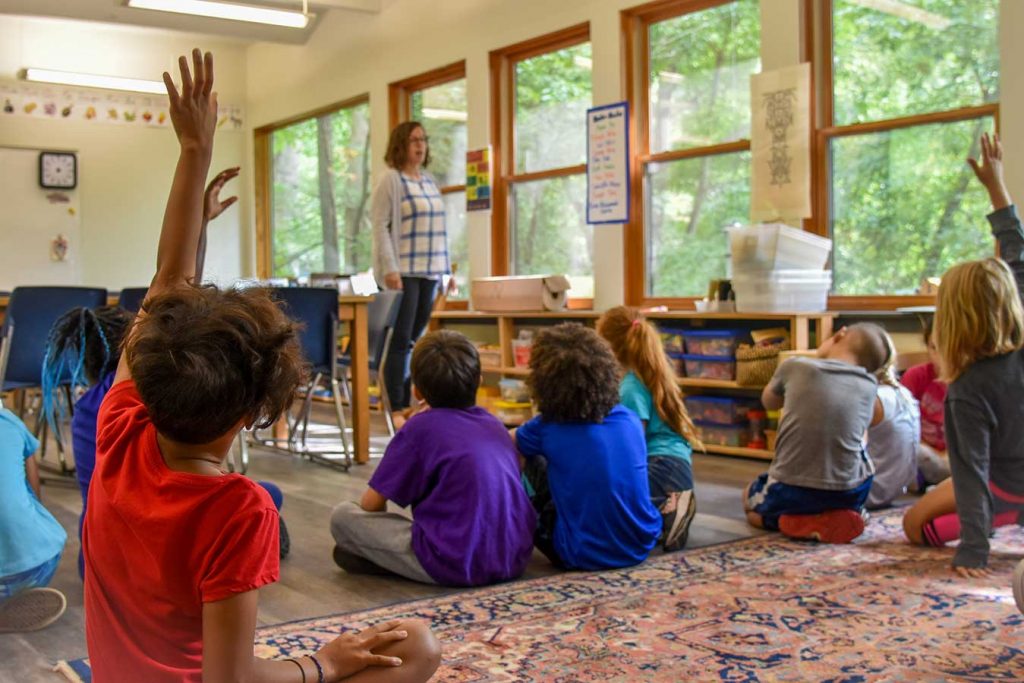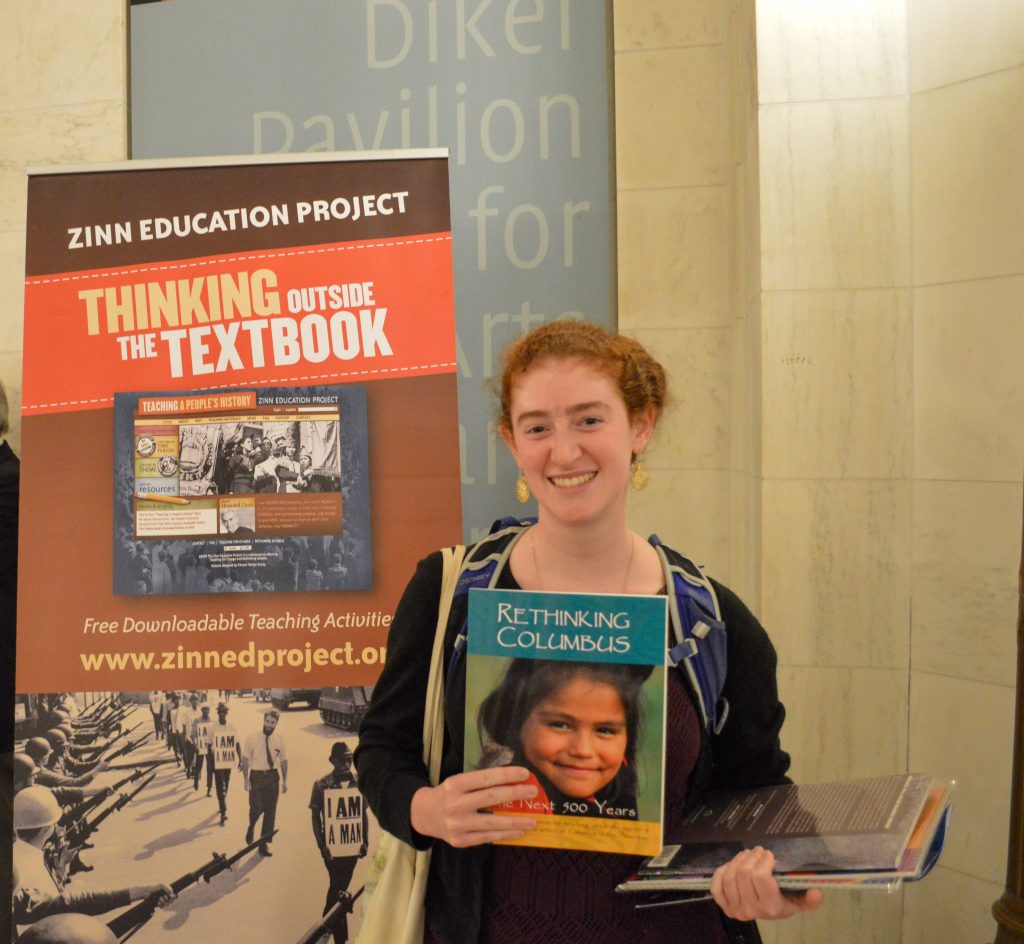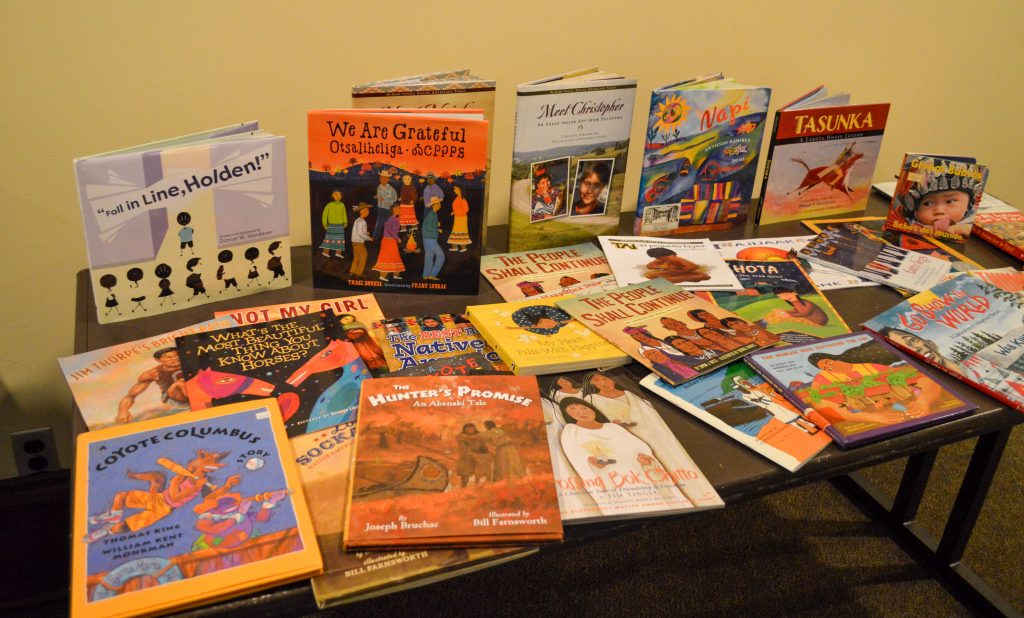New Tenet Affirms Long-held Values at Miquon
by Kristin Sanderson with Brenda Lange
Part 1 of 2; Read Part 2
At Miquon, we adhere to a core Progressive educational philosophy that guides our curriculum and overall approach to educating students. Although the world around Miquon may shift, we remain focused on the enduring values we have held since our founding in 1932. Among these beliefs is the idea that all humans are important — no matter their age or background — and that everyone is a valuable contributor to the world in which we live.
Our tenets, or our guiding principles include the ideas that children learn by doing, their curiosity and initiative are integral to their education, and the natural world is a place to learn, among others.
Last May and following several surveys and work by the Diversity, Equity and Action Committee, Miquon solidified this belief for the larger community to see and better understand in the form of a 10th tenet:
We believe that children can be upstanders and agents of change. Fostering respect for differences and developing the skills to challenge racism hate, and bigotry helps children to make positive contributions in the world.

To affirm the new tenet and invigorate our work in this area, the students and staff are bringing an increased focus on our anti-bias work during the 2019-20 school year. The article that follows is the first in a forthcoming series showcasing the new 10th tenet in action here at Miquon this year.
Indigenous Peoples’ Day Teach-In Enhances Miquon’s Curriculum
This fall, as a part of the unveiling of the new tenet and to help bring an even greater anti bias focus to our curriculum, several Miquon teachers attended Indigenous Peoples’ Day Teach-in in New York City, which was hosted by Teaching for Change and the Smithsonian’s National Museum of the American Indian. Workshops and presentations exploring how Native Americans are portrayed in children’s literature, how Native people experience life in contemporary America, and discoveries and innovations made by Indigenous Peoples offered Miquon staff insights on continuing to deepen anti bias practices at school and to help children become agents of change.
“It was exciting, and a wonderful opportunity to join other teachers who want to broaden their understanding of today’s approach to working with children and teaching and learning the reality of Native Americans in history and modern context,” said Wendy Leitner-Sieber, who teaches 3rd and 4th grade.
For years the Miquon 3rd and 4th grade social studies curriculum has entailed an intensive study of the Lenape tribe, whose homeland stretches across eastern Pennsylvania, encompassing the land on which Miquon sits. Classrooms explore the Lenape way of life and their influence on Southeastern Pennsylvania. As a part of this study, students participate in a simulation of Lenape times through an extended role play — imagining themselves living in that time, journaling from a Lenape person’s perspective, building models of typical dwellings, and more.
To supplement this existing curriculum, however, Miquon teachers are always striving to gain more information about the many Indigenous communities throughout the country — their various discoveries, their similarities, and their individual distinctions.
Adding to their Curriculum Toolbox
“There is so much misinformation that has to be unpacked around racial bias . . . and ways of teaching history so that students understand that Native Americans continue to live in communities across the country today,” Wendy said.
Native Americans are often lumped into one homogenous grouping, which is hardly the case, she explained. Each tribe contains diverse cultures and individual identities; recognizing the variety of tribal identities is a key to increased understanding.

Together with educators from many other schools, Wendy and the other Miquon teachers in attendance — Cassandra Orr, Jeri Bond Whatley, Rachel Elin-Saintine, and Sarah Yanuck – examined 10 core concepts used to help children gain a deeper knowledge of the many Indigenous American cultures.
In Literature
In elementary school, many of the concepts can be applied to Language Arts work. For example, conference attendees learned how to help students become better critical thinkers and critical readers of history. This began with a review of the methods for best assessing children’s books (especially those written about Native Americans) for accuracy, perspective, and authority. Teachers were given a framework to help ensure they are intentional when choosing diverse, inclusive, and modern books, focusing on those by Indigenous authors. The Miquon teachers in attendance were delighted to discover that this framework was consistent with their current approach.
“So many of the books [available] are written in the past tense, which can make it tricky, because readers think of Indigenous Peoples as existing only in the past,” Wendy said.
“Native American authors who set their work in the modern day where children can see other kids like themselves, riding a school bus, playing soccer, and doing things with their family and friends, for example, are a valuable way to understand Indigenous communities exist in our country today,” she added.

In Social Studies
The core concepts can also be used with social studies, and Indigenous Peoples’ Day Teach-In reinforced the Miquon’s work planning our social studies curriculum. To ensure an anti bias lens in the curriculum, teachers ask themselves key questions about whether our students of a wide range of identities can see themselves and their experiences reflected in the texts they are learning. Another critical step in anti bias work is offering a range of first-person voices in the classroom.
In the primary grades, it’s important for students to read and learn about children whose lives they can relate to, whether about contemporary children like them, or those who lived a long time ago but who did similar activities. In this way, Miquon children learn to look for mirrors and windows: It’s the idea that they might be able to find in another culture similarities to their own experiences (or a mirror) as well as difference — which is a window into something new, and ultimately, a doorway to better connect with and understand humans of different backgrounds, traditions, family histories, and ethnicities.
“They can relate to children they read about, and in doing so, come to understand why many of these traditions are still valued today,” said Wendy.
The Miquon teachers came away from the conference with ideas from the exhibits on Native American scientific discoveries and inventions that continue to benefit people today, and say they plan to use ideas from the exhibits on farming, medicine, and engineering later this year. The time spent in the imagiNATIONS Activity Center inspired the teachers with new ideas for including more hands-on experiences for students as well.
Stay tuned for Part 2, which will publish in the January 2020 issue of MQ Connections.